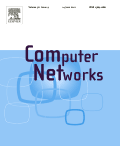
Computer Networks
Scope & Guideline
Connecting Innovations in Computer Networks
Introduction
Aims and Scopes
- Network Architecture and Protocols:
Research on the design, implementation, and performance evaluation of network architectures and protocols, including Software-Defined Networking (SDN), Network Function Virtualization (NFV), and emerging protocols for 5G and beyond. - Security and Privacy in Networks:
Studies addressing cybersecurity challenges, including intrusion detection, threat modeling, and the use of blockchain for secure communications and data privacy in networked environments. - Resource Management and Optimization:
Innovative approaches for resource allocation, load balancing, and task offloading in edge computing and cloud environments, leveraging machine learning and optimization algorithms. - Wireless and Mobile Networks:
Research focusing on mobile and wireless networking, including vehicular networks, IoT applications, and the integration of machine learning for enhanced performance and reliability. - Network Performance Evaluation:
Empirical studies and simulations aimed at assessing the performance of network protocols and architectures, including QoS metrics, latency, and energy efficiency.
Trending and Emerging
- Machine Learning and AI in Networking:
The integration of machine learning and artificial intelligence techniques for network optimization, anomaly detection, and predictive analytics is gaining momentum, highlighting the role of data-driven decision-making in network management. - 5G and Beyond Technologies:
Research focused on the challenges and innovations related to 5G networks, including network slicing, low-latency applications, and the impact of emerging technologies like edge computing and IoT. - Blockchain for Secure Communications:
The application of blockchain technology for enhancing security, trust, and transparency in networking, particularly in IoT and cloud computing environments, is emerging as a significant area of interest. - Energy-Efficient Networking Solutions:
Research aimed at developing energy-efficient protocols and architectures, particularly in the context of IoT and mobile edge computing, is trending as sustainability becomes a priority in technology development. - Cybersecurity and Resilience:
Increasing focus on building resilient networks capable of withstanding cyber threats, with research on advanced intrusion detection systems and proactive security measures gaining traction.
Declining or Waning
- Traditional Networking Protocols:
Research on older networking protocols (e.g., IPv4, legacy routing protocols) appears to be waning as focus shifts towards more modern protocols designed for scalability and security in the context of 5G and IoT. - Basic Network Management Techniques:
Studies focusing on conventional network management techniques are less prevalent, as the community moves towards more automated and intelligent management solutions leveraging AI and machine learning. - Static Network Architectures:
Research on static or less adaptive network architectures is decreasing, with more emphasis now on dynamic and flexible network configurations that can respond to real-time demands and conditions.
Similar Journals

IEEE Open Journal of the Communications Society
Empowering Innovation in Computer NetworksWelcome to the IEEE Open Journal of the Communications Society, a premier open-access publication dedicated to advancing the fields of computer networks and communications. Launched in 2020 by the esteemed IEEE-Institute of Electrical and Electronics Engineers, this journal operates under a commitment to disseminate high-quality, peer-reviewed research that fosters innovation and collaboration within the global communications community. With an impressive impact factor and currently positioned in the Q1 category of Time's rankings for Computer Networks and Communications (2023), the journal ranks 21st out of 395 in its field, placing it within the top 6% globally. It serves as a vital forum for researchers, professionals, and students, providing them with immediate access to pioneering studies and emerging trends. Being fully open access, all published articles are freely available to enhance the reach and impact of your research. Join us in exploring transformative ideas and technologies that shape the future of communications.
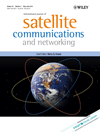
INTERNATIONAL JOURNAL OF SATELLITE COMMUNICATIONS AND NETWORKING
Shaping the Landscape of Satellite CommunicationsInternational Journal of Satellite Communications and Networking is a premier academic journal published by Wiley, dedicated to advancing knowledge in the fields of satellite communications and networking. With an ISSN of 1542-0973 and E-ISSN 1542-0981, this journal has been a significant contributor to the discourse surrounding electronic and media technologies since its inception in 2003. Recognized for its rigorous peer-review process, it has achieved notable rankings, placing in the Q2 and Q3 quartiles across various categories, highlighting its impact and relevance in the competitive domains of Engineering and Media Technology. Researchers, professionals, and students can benefit from access to cutting-edge research and innovations in satellite communications, as it ranks #18/63 in Engineering Media Technology and #323/797 in Electrical and Electronic Engineering. The journal's commitment to fostering a deeper understanding of networking technology makes it an essential resource for anyone looking to stay at the forefront of this rapidly evolving industry.

GetMobile-Mobile Computing & Communications Review
Pioneering Research in Mobile NetworksGetMobile-Mobile Computing & Communications Review, published by the Association for Computing Machinery (ACM), is a leading journal dedicated to the evolving field of mobile computing and communication technologies. With an ISSN of 2375-0529 and an E-ISSN of 2375-0537, this publication serves as a vital resource for researchers, professionals, and students, providing insights into the latest advancements, trends, and challenges in mobile technology. The journal covers a comprehensive range of topics, including but not limited to mobile networks, communications protocols, mobile applications, and edge computing, making it invaluable for those in academia and industry alike. Although specific metrics such as impact factor and H-index are currently unavailable, GetMobile is recognized for fostering innovative research and promoting knowledge exchange in mobile and computational communications. As the field continues to grow, this journal remains pivotal for disseminating impactful studies and practical applications that drive the future of mobile technology.
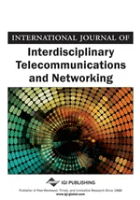
International Journal of Interdisciplinary Telecommunications and Networking
Navigating the Future of Interdisciplinary CommunicationThe International Journal of Interdisciplinary Telecommunications and Networking, published by IGI Global, serves as a pivotal resource for researchers, professionals, and students in the fields of telecommunications and networking. With an ISSN of 1941-8663 and an E-ISSN of 1941-8671, this journal aims to bridge the gap between various disciplines, presenting cutting-edge research and innovative solutions that address contemporary challenges in these rapidly evolving fields. Although currently not indexed for Open Access, the journal seeks to foster an inclusive platform for interdisciplinary dialogue, encouraging contributions that explore the intersections of technology, policy, and practice. As a dynamic publication, it aspires to enhance the understanding of telecommunication systems and their impact on society, making it an essential addition to the library of any scholar or practitioner looking to stay at the forefront of technological advancements.

WIRELESS NETWORKS
Advancing the Frontiers of Wireless CommunicationWIRELESS NETWORKS is a prestigious journal published by Springer, focusing on cutting-edge research in the domains of wireless communication, computer networks, and information systems. Established in 1995 and set to converge its influential contributions until 2024, this journal has rapidly ascended to a Q2 category ranking in the fields of Computer Networks and Communications, Electrical and Electronic Engineering, and Information Systems, reflecting its significant role in advancing knowledge and innovation—ranked 75th, 151st, and 84th respectively in their fields by Scopus. Researchers and professionals alike value its contribution to the discourse on wireless technologies, making it a vital resource for professionals and students eager to stay abreast of the latest trends and findings. Although it does not offer open access, the insights gleaned from its articles are invaluable for tackling the challenges of modern communications and ensuring the efficient use of wireless networks.

Frontiers in Communications and Networks
Leading the Charge in Communication TechnologiesFrontiers in Communications and Networks is a prominent open-access journal published by FRONTIERS MEDIA SA, established in 2020 and positioned in the heart of Switzerland. As an interdisciplinary platform, it focuses on advancing research related to computer networks, communications, and signal processing, providing a critical forum for innovative findings and developments in these rapidly evolving fields. With an impressive Q1 ranking in Computer Networks and Communications and a Q2 ranking in Signal Processing as of 2023, this journal is highly regarded among scholars and practitioners seeking to disseminate their work to a broad audience. By offering open-access options, it ensures that the research is widely available, fostering collaboration and knowledge sharing across the globe. Researchers, professionals, and students are encouraged to engage with the journal as it aims to encapsulate the burgeoning advancements shaping our digital communication landscape.

MOBILE NETWORKS & APPLICATIONS
Advancing Knowledge in Mobile Networks and ApplicationsMOBILE NETWORKS & APPLICATIONS, published by Springer, is a leading journal in the fields of Computer Networks and Communications, Hardware and Architecture, Information Systems, and Software. With an impact factor that underscores its significance in the realm of mobile computing, this journal serves as a critical platform for disseminating cutting-edge research and innovative applications from both theoretical and practical perspectives. Established in 1996 and continuing until 2024, it has consistently ranked within the Q2 quartile across various computer science categories, highlighting its commitment to excellence and rigorous peer review. The journal's reach extends globally, providing valuable insights to researchers, professionals, and students alike. Notably, it occupies impressive ranks in Scopus, including 51st in Computer Networks and Communications and 26th in Hardware and Architecture, illustrating its high standing in the academic community. Engaging with this journal means accessing a wealth of knowledge that drives forward the rapidly evolving landscape of mobile networks and applications.

COMPUTING
Shaping the Future of Numerical Analysis and ComputingCOMPUTING, published by Springer Wien, is a prestigious journal that has been at the forefront of computational research since its inception in 1966. With an ISSN of 0010-485X and an E-ISSN of 1436-5057, this journal is renowned for its rigorous peer-reviewed articles that span across various domains such as Computational Mathematics, Numerical Analysis, and Theoretical Computer Science. The journal consistently maintains a high impact factor, securing a Q1 ranking in multiple categories including Computational Mathematics and Computer Science Applications, thereby reflecting its influential role in shaping contemporary academic discourse. Although it does not currently offer open access options, the journal is widely accessible within academic institutions. Given its significant placement in Scopus rankings—most notably Rank #5 in Numerical Analysis—COMPUTING is an essential resource for researchers, professionals, and students who are engaged in advancing the field of computing. With its scope extending to innovative methodologies and theoretical advancements, COMFORTING continues to attract high-quality submissions, making it a cornerstone publication in the computational sciences.
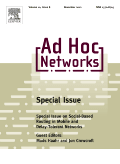
Ad Hoc Networks
Exploring the Future of Wireless ConnectivityAd Hoc Networks, published by Elsevier, is a leading journal in the fields of Computer Networks and Communications, Hardware and Architecture, and Software, with an impressive Q1 ranking in all three categories as of 2023. With an ISSN of 1570-8705 and an E-ISSN of 1570-8713, this journal offers a robust platform for disseminating cutting-edge research and advancements in network technologies, emphasizing the importance of efficient communication protocols and architectures in contemporary computing environments. Operating from the Netherlands, it has emerged as a pivotal resource for researchers and professionals seeking to explore novel methodologies, frameworks, and applications within the domain of ad hoc and wireless networks. The journal's high impact factor and Scopus rankings—44th in Computer Networks and Communications, 20th in Hardware and Architecture, and 53rd in Software—underscore its relevance and authority in the academic community. Ad Hoc Networks is committed to fostering a deeper understanding of the complexities and innovations in network design, making it an essential read for anyone invested in the future of communication technology.
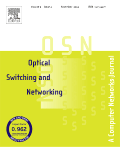
Optical Switching and Networking
Transforming Ideas into Optical SolutionsOptical Switching and Networking is a prestigious academic journal published by ELSEVIER, focusing on cutting-edge research and developments in the field of optical communications and networking. With an impressive impact factor and quartile ranking, this journal is recognized as a vital resource for professionals and researchers in Computer Networks and Communications and Electrical and Electronic Engineering, positioned in the Q2 category according to the latest metrics. Aiming to foster innovation and knowledge exchange among scholars, the journal covers a diverse range of topics, from optical switching mechanisms to the latest advancements in network architecture. Researchers benefiting from its accessible content will find it an invaluable platform for advancing their work and engaging with a global community of experts. For those seeking to enhance their understanding and contribute to the academic discourse in these rapidly evolving fields, Optical Switching and Networking serves as an essential conduit for high-quality research and ideas.